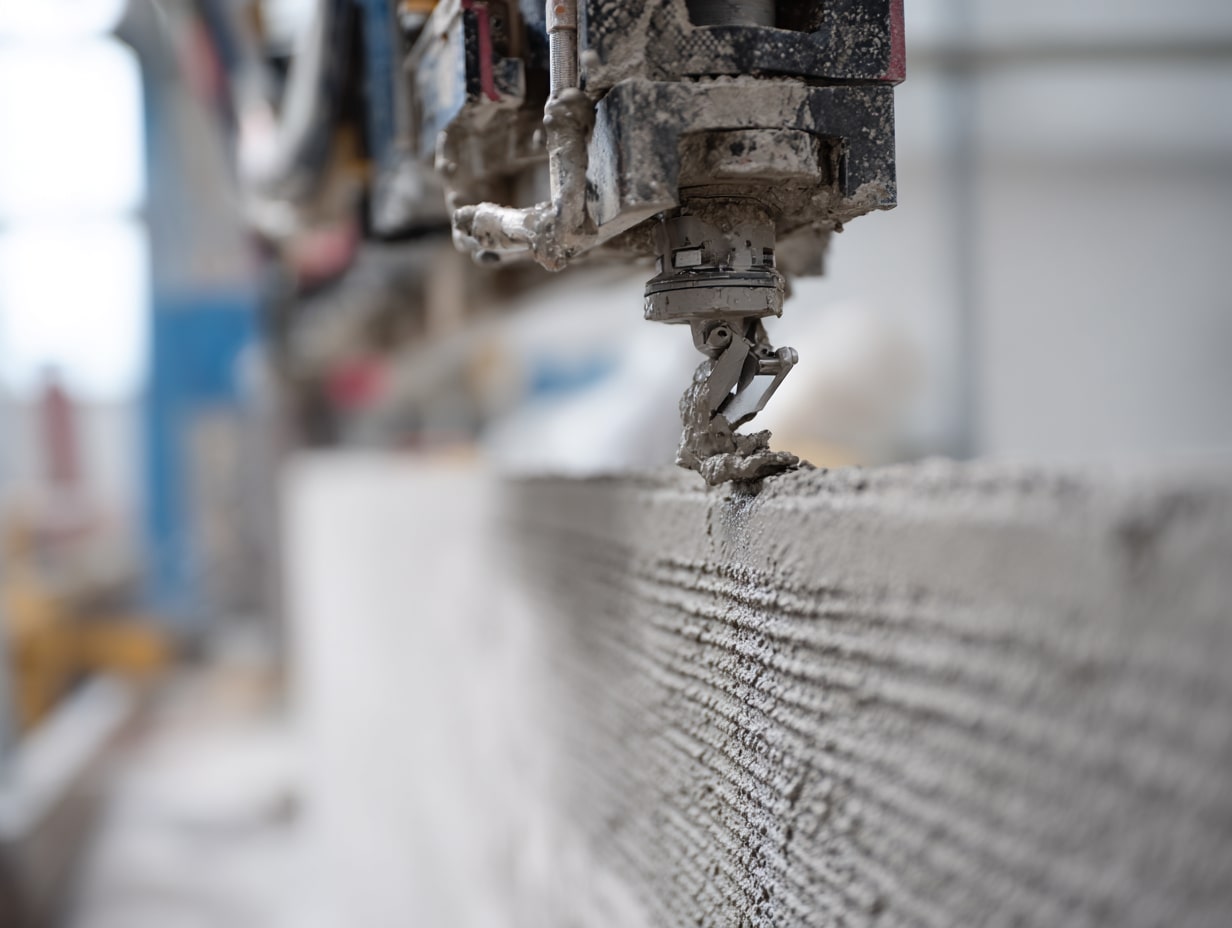- Home
- Articles
- Architectural Portfolio
- Architectral Presentation
- Inspirational Stories
- Architecture News
- Visualization
- BIM Industry
- Facade Design
- Parametric Design
- Career
- Landscape Architecture
- Construction
- Artificial Intelligence
- Sketching
- Design Softwares
- Diagrams
- Writing
- Architectural Tips
- Sustainability
- Courses
- Concept
- Technology
- History & Heritage
- Future of Architecture
- Guides & How-To
- Art & Culture
- Projects
- Interior Design
- Competitions
- Jobs
- Store
- Tools
- More
- Home
- Articles
- Architectural Portfolio
- Architectral Presentation
- Inspirational Stories
- Architecture News
- Visualization
- BIM Industry
- Facade Design
- Parametric Design
- Career
- Landscape Architecture
- Construction
- Artificial Intelligence
- Sketching
- Design Softwares
- Diagrams
- Writing
- Architectural Tips
- Sustainability
- Courses
- Concept
- Technology
- History & Heritage
- Future of Architecture
- Guides & How-To
- Art & Culture
- Projects
- Interior Design
- Competitions
- Jobs
- Store
- Tools
- More
How Architecture Affects Your Mental Well Being: Design Tips for a Healthier Mind
Discover how architecture impacts your mental well-being by shaping emotions, stress levels, and productivity. Explore how design elements like natural light, colors, biophilic features, and noise control create calming, inviting spaces. Learn how thoughtful layouts and personalization foster relaxation, creativity, and happiness, promoting a balanced and healthy mind.

We often overlook how the spaces around us shape our minds. From the homes we live in to the buildings we work in, architecture silently influences our emotions, productivity, and overall mental well-being. It’s not just about aesthetics; it’s about how these spaces make us feel and function every day.
The way light filters through a room, the height of a ceiling, or even the colors on the walls can impact our mood and stress levels. Thoughtful design can inspire creativity, promote relaxation, or even foster a sense of community. When we pay attention to how architecture affects us, we can create environments that truly support our mental health.
Table of Contents
ToggleThe Connection Between Architecture And Mental Well-Being
Architectural design shapes our experiences by influencing how we perceive and interact with spaces. Features such as layout, lighting, and material choices determine whether an environment feels inviting, calming, or stressful. This connection directly impacts emotions, cognitive functions, and mental well-being.
Spatial arrangements affect movement and emotional responses. Open layouts encourage social interaction and foster a sense of community, while cluttered or poorly organized spaces can lead to stress or anxiety. For example, office designs with collaborative areas enhance workplace morale.
Natural elements improve mental health. Incorporating biophilic design principles, such as greenery or natural light, can reduce stress and boost focus. Studies show that access to natural surroundings supports emotional balance and reduces symptoms of depression.
Color and texture evoke specific psychological responses. Warm colors offer comfort and energy, while cool tones promote tranquility. Smooth textures create a sense of calm, whereas rough surfaces can evoke stimulation or discomfort, depending on their placement and context.
Soundscapes within architecture influence relaxation and productivity. Poor acoustics contribute to mental fatigue, while thoughtful acoustic design mitigates noise distractions. For instance, acoustic panels or soundproofing in high-noise areas enhance concentration.
Access to adaptable spaces supports diverse needs. Flexible areas accommodate changing activities, encouraging a sense of control and reducing mental strain. Modular furniture or multi-functional environments are effective examples.
By integrating thoughtful design into structures, we can create spaces that not only maintain aesthetic value but also improve well-being through subtle, functional elements.

The Role Of Light And Space
Light and space are fundamental in shaping how we feel within a built environment. Both natural lighting and spatial design directly influence our emotional well-being and mental state. You could even invest in a quality garden room, allowing you to be exposed to natural light in your garden.
Natural Lighting And Its Psychological Benefits
Exposure to natural light regulates our circadian rhythms, supporting better sleep and mood stability. Studies reveal that individuals working in well-lit spaces with ample daylight experience reduced stress and higher levels of productivity. Large windows, skylights, and glass facades are elements architects use to maximize natural light, enabling spaces to feel more welcoming and energizing.
Natural lighting also increases the production of serotonin, a neurotransmitter linked to happiness. In environments with limited daylight, artificial lighting mimicking natural tones can alleviate symptoms of seasonal affective disorder (SAD). Bright, evenly distributed light contributes not only to visual clarity but also to creating uplifting atmospheres.
The Impact Of Spatial Design On Mood
Spacious environments with high ceilings foster feelings of freedom and creativity by stimulating areas of the brain associated with abstract thinking. Compact or overcrowded spaces, on the other hand, can lead to tension and claustrophobia, particularly in work or residential settings.
Open layouts encourage interaction and collaboration, reducing social isolation. In contrast, private nooks or partitioned zones provide refuge for introspection and relaxation. Balanced spatial configurations that integrate both communal and personal areas support varied emotional needs, ensuring spaces promote rather than hinder mental well-being.

Colors And Their Psychological Influence
Colors in architectural spaces influence our emotions and mental well-being. Each shade carries psychological effects that can impact mood, energy, and stress levels.
Calm And Neutral Tones
Calm and neutral tones, like beige, gray, and soft pastels, create soothing environments. These tones help reduce anxiety by promoting relaxation and mental clarity. For example, pale blue walls enhance tranquility, making them ideal for bedrooms or meditation spaces. Neutral shades also provide a balanced backdrop, preventing overstimulation in busy environments such as offices.
Vibrant Colors And Energy Levels
Vibrant colors, including red, orange, and yellow, stimulate energy and creativity. Red enhances attention and passion, making it suitable for spaces like creative studios or gyms. Yellow fosters optimism and boosts focus, commonly used in learning or collaborative areas. While energizing, excessive use of bright hues can induce stress, making careful balance essential in design choices.
Green Spaces And Nature Integration
Architectural designs that incorporate green spaces and natural elements directly impact our mental well-being. By integrating nature into built environments, we achieve stress reduction, improved focus, and enhanced emotional health.
Biophilic Design Elements
Biophilic design leverages elements that foster a connection between humans and nature. Features like living walls, indoor plants, and natural materials (e.g., wood and stone) create calming environments. These elements reduce stress and increase feelings of happiness, as shown in a study by Frontiers in Psychology (2019), which found that exposure to greenery improves overall mood.
Incorporating views of natural landscapes through windows enhances mindfulness and reduces anxiety. Water features, such as fountains, provide soothing auditory stimuli that promote relaxation. Adequate ventilation, combined with nature-inspired patterns, heightens sensory experiences.
The Role Of Outdoor Spaces In Mental Health
Outdoor spaces play a pivotal role in supporting mental health and cognitive well-being. Parks, gardens, and rooftop terraces encourage fresh air exposure, physical activity, and social interaction. Research in Environmental Health Perspectives (2016) links time spent in green spaces to lower depression and improved overall health.
Designing accessible outdoor environments fosters inclusivity while enabling stress relief. Spaces equipped with seating, shaded areas, and walking paths offer restorative benefits. Integrating outdoor spaces alongside communal areas strengthens a sense of belonging, enhancing community cohesion and emotional resilience.

Noise Reduction And Acoustics
The control of noise levels and proper acoustics in architectural design directly affects mental well-being. Spaces designed to minimize noise and enhance sound quality promote relaxation, focus, and emotional balance.
Importance Of Quiet Environments
Quiet environments reduce stress and enhance mental clarity, fostering a sense of calm. Excessive noise levels can lead to irritation, anxiety, and even cognitive fatigue, especially in urban settings or high-traffic zones. Incorporating soundproofing materials like acoustic panels, insulated windows, and noise-absorbing flooring ensures that internal spaces remain undisturbed. Libraries, offices, and healthcare facilities benefit significantly from these strategies, as they support activities requiring concentration and tranquility.
Managing Urban Noise Through Design
Architectural designs in urban areas must address external noise for better mental well-being. Strategic placement of buildings, such as facing quieter streets or incorporating buffer zones like green spaces, can limit sound intrusion. Additionally, using barriers like walls with dense materials or vegetated facades reduces noise transmission. Multi-layer windows and rooftop gardens not only block urban noise but also enhance the sensory appeal of a space, creating a more peaceful environment tailored for emotional comfort.

Personalization And Comfort In Spaces
Personalized spaces that provide comfort significantly enhance mental well-being. Architectural designs addressing unique needs and incorporating familiarity can create environments that evoke positive emotions and reduce stress.
Designing For Individual Needs
Tailoring spaces to individual preferences improves emotional connection and functionality. Customizable elements like adjustable lighting, modular furniture, and flexible layouts allow occupants to adapt environments to their specific requirements. For example, a workspace with adaptable desk heights supports ergonomic comfort while a home with convertible spaces caters to evolving needs. Personalized colors and textures further enhance satisfaction, as they resonate with personal tastes and emotions, making spaces feel more welcoming and supportive.
The Role Of Familiarity In Reducing Stress
Incorporating familiar elements fosters a sense of security and alleviates anxiety. Designs that integrate cherished personal objects, cultural motifs, or locally inspired materials create meaningful connections, promoting comfort and mental balance. For instance, using traditional patterns in textiles or regional architectural styles can evoke nostalgia and stability. Familiar surroundings are especially beneficial during transitions, helping individuals adjust to new environments while maintaining emotional well-being.
Conclusion
Architecture profoundly shapes our mental well-being by influencing emotions, stress levels, and overall health. Factors like spatial arrangements, natural light, and biophilic elements dictate how we perceive and interact with our environments. Thoughtful design choices, such as calming color palettes, noise reduction strategies, and personalization, foster spaces that support emotional balance and mental clarity. By integrating functionality with aesthetics, architecture promotes environments that enhance happiness, productivity, and connection.
- architectural design for mental health
- architecture and mental health
- architecture and well-being
- architecture impact on mental state
- benefits of architecture for mental well-being
- building design for mental health
- creating spaces for mental health
- design tips for mental health
- healing architecture
- healthy architecture
- how design affects mental well-being
- impact of design on well-being
- mental health and architecture
- mental health in architectural design
- mental health-friendly architecture
- mental wellness design tips
- mindful architecture
- psychology of architecture
- therapeutic design
Submit your architectural projects
Follow these steps for submission your project. Submission FormLatest Posts
3D Printed Homes: Time, Cost, and What to Expect
3D printed homes explained: realistic timelines (24–72h walls, 8–16 weeks total), true...
How a Contact Centre Boosts Trust in Your Building Business
In construction, trust is the glue that holds projects together. Clients need...
How Real Time Parcel Geolocation Is Redefining Last Mile Efficiency for Modern Businesses
Last mile delivery has become the most critical point in the customer...
How Can Small Spaces Stay Stylish and Relaxing?
In today’s fast-paced urban lifestyle, small living spaces are becoming increasingly common....












Leave a comment